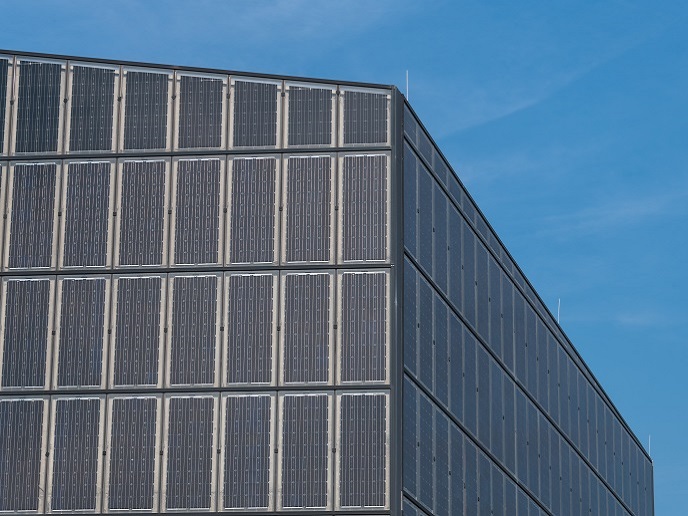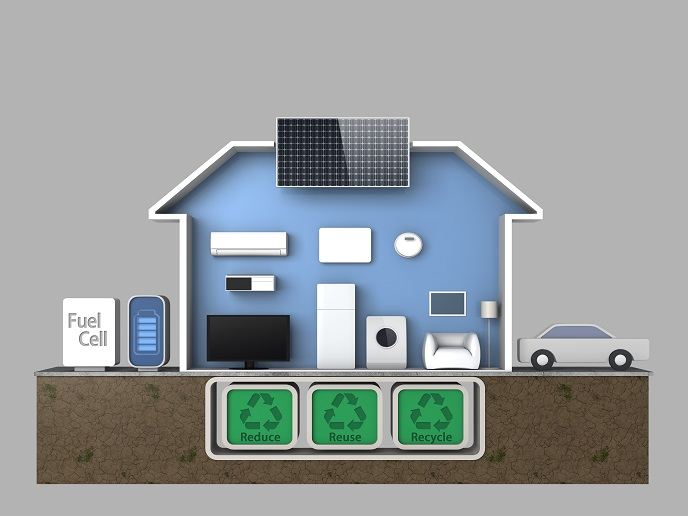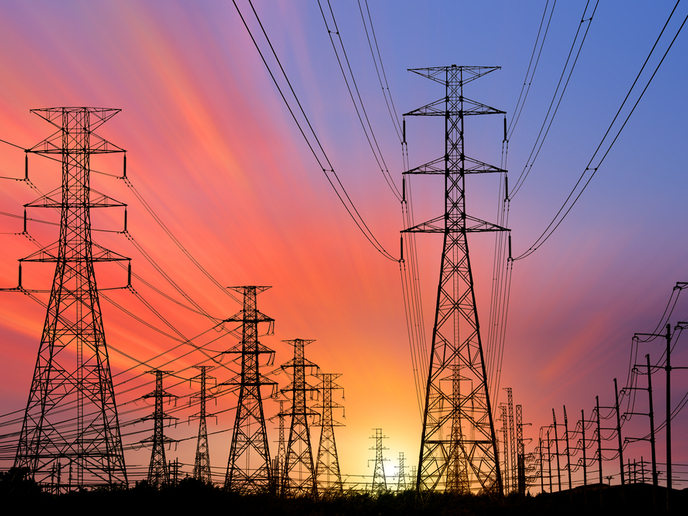Smart facade solution for building energy efficiency
Curtain wall systems consist of lightweight aluminium-framed or timber facade structures that envelope a building. Typically seen on commercial buildings, they hold in place large glass, metal or composite panels, which can be replaced if necessary. “Retrofitting superior insulation into existing curtain wall systems is sometimes necessary to meet more stringent building codes,” explains POWERSKIN PLUS(opens in new window) project coordinator Jorge Corker, from the Pedro Nunes Institute(opens in new window) (IPN) in Portugal. “However, engineers and architects frequently struggle to install traditional insulating solutions, due to limited space, and the need to ensure that any added weight derived from retrofitting does not jeopardise the building’s integrity or stability.”
Storing and using renewable energy on-site
The POWERSKIN PLUS project sought to address these challenges through the development of an innovative facade solution. The system integrates highly energy-efficient components, solar energy harvesting and energy storage components. “European countries need to decarbonise(opens in new window) their national building stocks by 2050, and promote the cost-effective conversion of existing buildings into nearly zero-energy buildings (NZEBs),” says Corker. “Achieving these objectives requires the development of innovative approaches and smart solutions.” During the project, prefabricated panel systems were developed to enhance external wall insulation (given by the U-value, a measure of how much heat passes through a square metre of material). Due to their low weight (opaque elements can be as low as 5 kg/m2 and triple glazed transparent ones around 30 kg/m2), they do not require additional building structural modification when retrofitted, making them easy to swap in. A number of state-of-the-art energy-efficient materials were applied, including superinsulation elements (insulated glass units with U-values 35 % better than standard double glazing, and lightweight opaque modules able to reach U-values of as low as 0.098 W/m2 K), multifunctional nano-enabled coatings that add anti-reflective, self-cleaning, antifungal and fire-resistant properties, and advanced solar energy harvesting components. To make use of the captured solar energy, a storage and management system for buildings was also developed, using second-life Li-ion batteries recycled from electric vehicles.
Successful retrofitting at demo sites
The project team was able to demonstrate its innovative facade system at sites in Czechia, Germany and Portugal. On the IPN campus, panelling was retrofitted onto an office building dating from the early 1990s. A battery storage system was installed, and the energy performance monitored. “We were able to show that our prefabricated modules can be easily installed in either new or retrofitted curtain wall buildings,” adds Corker. “We believe that these panels will be able to cover different performance needs, regulatory and environmental requirements and budget options.” Corker believes a key benefit lies in the modular nature of the system. The pilot studies were able to demonstrate swift installation and a reduction in unnecessary waste, which could be a critical affordability issue for building operators.
Contribution to climate change mitigation
Following project completion in March 2024, Corker and his team intend to continue improving the system, with the aim of commercialising their innovation. “We think we will be able to market this system within three years,” he says. Some components are at a more advanced stage than others. For example, the building electric storage system is close to being market-ready, and will be offered to enterprises as a stand-alone product through licensing agreements. Looking to the future, Corker believes that the deployment of innovative deep renovation technologies, such as the ones developed through POWERSKIN PLUS, will be of huge benefit to Europe. Operational energy use(opens in new window) in buildings represents about 30 % of global energy consumption, so any significant improvement in building energy efficiency would have a major impact on achieving EU climate goals. “Ultimately, the key contribution of this project will be measured by its positive contribution to future mitigation of climate change, reduced carbon emissions, enhanced energy security and improved quality of life for citizens,” concludes Corker.







